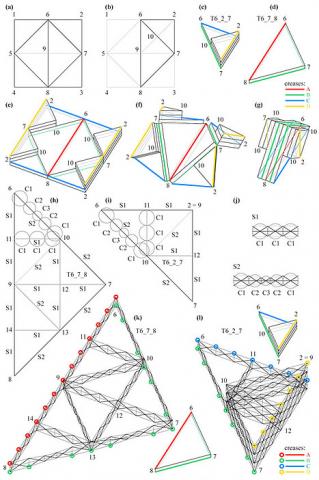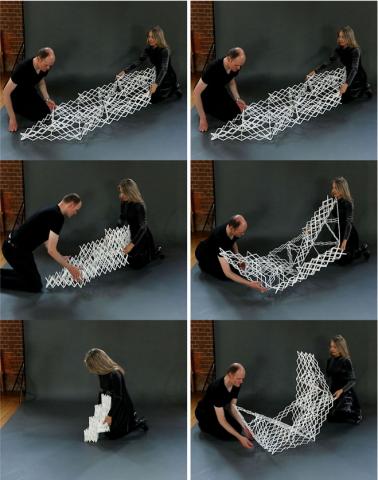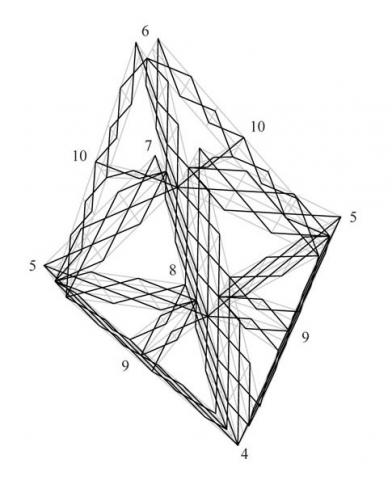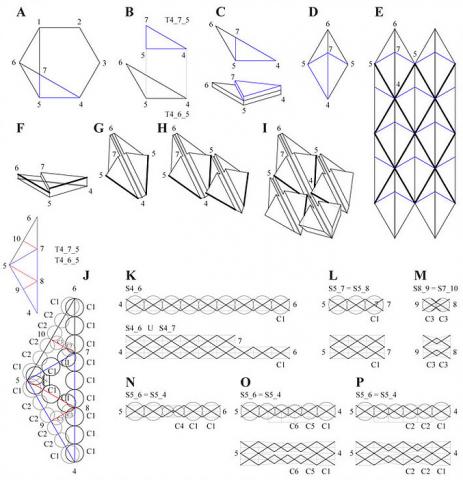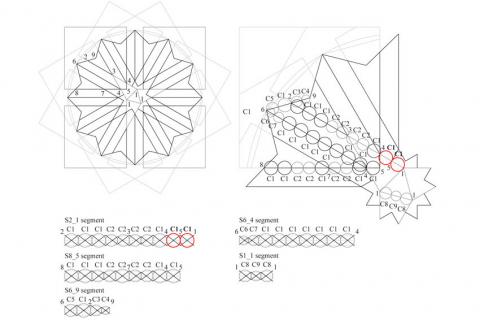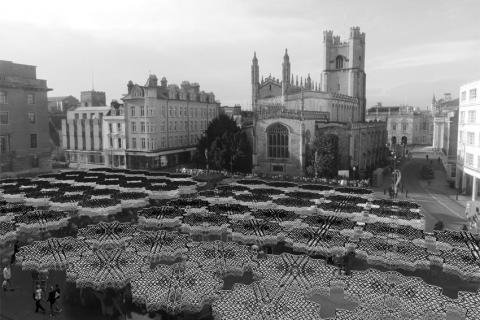Transforming architecture can be generated by the manipulation and design of deployable structures, which allow a maximum motion, expansion and contraction with the minimum energy input. These structures are light, adaptable and reusable. All these qualities therefore enable deployable structures to fully embrace the concept of sustainability. In an age where society evolves in unpredictable ways, were programmatic possibilities for architecture change rapidly, the emerging field of deployable structures is receiving increased interest as it offers a novel and versatile field for research and innovation for both its theory and practice.
Throughout the history of deployable structures origami and scissor-hinged have been different types out of many others that exist. Rivas-Adrover has unified both types making an ORIGAMI-SCISSOR hinged deployable structure which is the first thick origami that can not only fold and unfold, but also expand and contract. ORIGAMI-SCISSOR hinged deployable structures can simultaneously or independently unfold as an origami, and expand or contract as a scissor hinged structure (they have two degrees of freedom). This novel technology opens new possibilities for transforming architecture. A geometry method has been developed to realize this, and a prototype has been built that demonstrates this concept. This work has just been published by the Journal of the International Association for Shell and Spatial Structures.
Publications:
Rivas-Adrover, Esther, “A New Hybrid Type of Deployable Structure: ORIGAMI-SCISSOR Hinged”, Journal of the International Association for Shell and Spatial Structures, Vol. 59 No.3, September n. 197, 2018, pp. 183-190.
Rivas-Adrover, Esther, “ORIGAMI-SCISSOR Hinged Geometry Method”, Origami7, The proceedings from the 7th International Meeting on Origami in Science, Mathematics, and Education held in Oxford UK, Volume Three: Engineering One, Ed. J.Lang, Bolitho and You, Tarquin, 2018, pp 779-793.
Transforming Architecture Made with Scissor Hinged Deployable Structures: Alhambra Pavilions in Cambridge Market Square
Scissor-hinged deployable structures, made by units of bars joined by a pivot, can generate large complex lattice structures that can expand and contract. So far scissor-hinged deployable structures had been designed one by one, and scissor hinged surfaces have been made of grid lines made of triangles and squares. The ‘form generation method of relative ratios’ (FGMORR) by Rivas-Adrover can be applied to infinite combinations of lines and can therefore generate infinite scissor-hinged structures with optimum deployment. This is here demonstrated by applying the FGMORR to a combination of lines from the Alhambra in order to make a new scissor-hinged surface. Also, while so far scissor-hinged technology has been used to generate surfaces, here it has been demonstrated that the FGMORR allows for creating not only the surface or roof, but also its supports.
While this research extends the theory of the FGMORR for scissor -hinged deployable structures, it has also given a clear outline of the assembly and deployment strategy, as well as a potential intervention. The Alhambra pavilions in Cambridge Market Square demonstrate that this sustainable technology can embody cultural symbols, and can embrace the concepts of identity, place and culture; this therefore allows a conversation equally relevant that interacts with contemporary life, future technologies, and historical heritage.
Publication:
Rivas-Adrover, Esther, “Transforming Architecture Made With Scissor Hinged Deployable Structures: Alhambra Pavilions in Cambridge Market Square”, The 5th International Conference on Architecture and Built Environment S.ARCH held in Venice, Italy, Get It Published, 04.055, 2018, pp. 760-770.
BIO
ERA website: https://www.estherrivasadrover.com/
Esther Rivas-Adrover is an author, architectural researcher, educator and artist. After teaching Advanced Descriptive Geometry to architecture students in Spain she studied architecture at Oxford Brookes University where she later taught architectural design at degree and postgraduate level. Her interest in complex geometries led her to work for practices including Zaha Hadid Architects, where she worked on various projects in the UK and around the world. Her drawings have also been exhibited several times at the Royal Academy of Arts in London. In 2015 she published a book with the title ‘Deployable Structures’ commissioned by Laurence King Publishing, and she is currently undertaking research on the subject at the University of Cambridge with PhD supervisor Dr Michael Ramage and advisor Prof Simon Guest.


